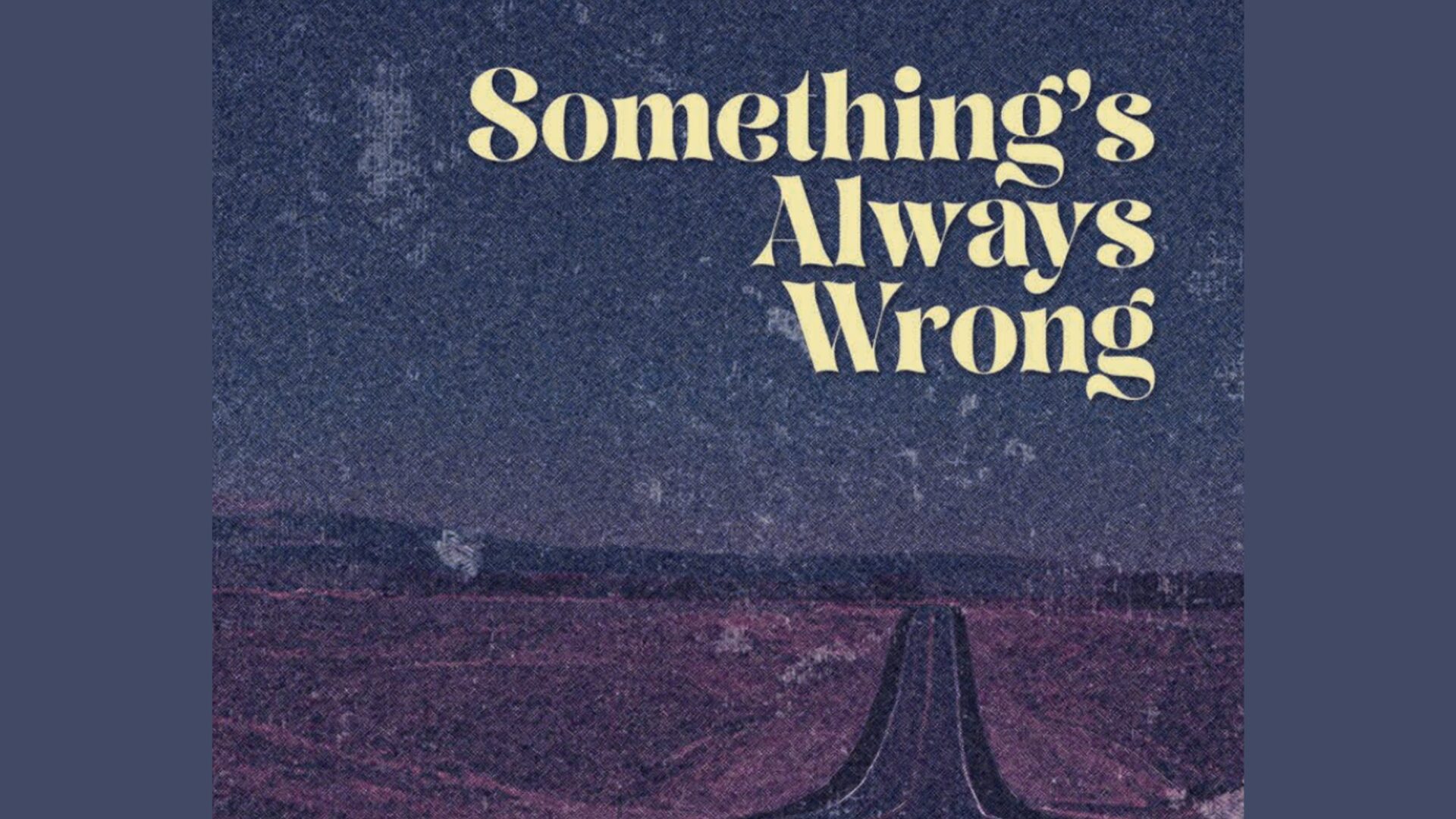Something’s Always Wrong is a short journaling solo tabletop game by Nathan Southard. It’s a break away from his more horror-centric roleplaying games, focusing instead on the miseries of a small-town 20-something faced with a choice: Stay in their home town, or leave, with their best friend or without.
Nathan Southard is a name I hadn’t heard before playing this game. But a brief look into him revealed a plethora of Mörk Borg Third-Party Content, some fascinating horror games with art directions right up my alley, and a personal website full of books and films.
Namely, I found a short film named “Two-Headed Beast”. It proposes itself as “a horror film about belief… and dance” and won Best in Show at the Texas Terrors Film Festival a few years ago.
“I’m feeling kind of shit at the moment, so I’m just smoking, trying not to think about the bitch leaving me out to dry here. It’s a bad habit, but when I’m sad, I guess, it’s become instinct to just light up and try to keep it together. Though my leg is bouncing and smacking the glovebox, which is annoying.”
There‘s only two cigs left in the box. Must’ve been a rough month. I don’t remember the last time I laughed. I know it’s possible but my memory’s just a bit fucked. Shit like that happens when you get in fist-fights with an angry lover whose taller, stronger and meaner.”
“Still, I do know I’m done with that shitty, no-good toy-store for lonely jerkwads and porn addicts. I’m done drinking cheap knock-off Carlton beer and taking whatever drugs I can get my hands on to get away from everything I’ve done wrong… and everything that’s gone wrong.”
Usually, the games I cover have some sort of story behind how I found them. Something worth telling. This is one of the exceptions. I hadn’t heard of Southard, nor any of his prior games and his social media presence is heavily restrained.
It was a needle in the haystack of itch.io’s New and Recent page, and I just happened to glimpse it and pluck it out before it got lost amongst the straw and shit. I think the best games are found by chance.
Design & Layout
What captured my interest with Something’s Always Wrong’s design and art direction was the dream-like, nebulous visuals. The cover image is grainy, and the colours bleed into each other.
The photographs in the books are evocative black and white pieces with high contrast. Paired with the 60s’ typography, you get a PDF infused with nostalgia among the melancholy, but never for a fixed moment in time.
The photographs used in the book are all sourced from Envato Elements, a paid stock asset site popular among graphic designers.
As with all stock photos, it is essential to pick and choose the images you use carefully, lest you end up with clashing tones and a disjointed style that doesn’t match what’s written on the page.
I don’t know if the images were black and white or distressed when Nathan Southard sourced them or if that was something he manually did later to tie them together.
Regardless, his choices were impeccable at establishing a consistent theme and making the photos look like they belonged in his layout.
It’s a useful tool for creators using stock images to learn basic photo editing and make assets look visually similar and consistent.
If an entire PDF is black and white, distressed and damaged, and one image is suddenly full colour, pristine and taken on a modern lens professionally, it’s not going to look right.
Note the conflicting visuals and energies in these two photos, despite both being portrait photos of an Asian street.
Same with art, if you flip between a soft cartoon style and a hyper-realistic sketchy look, it’s going to create dissonance in your work. This can be used to good effect.
For example, keeping a style relatively simple until a horror element occurs, then switching to hyper-realistic to emphasise the eldritch horrifying nature. But ultimately, you need to learn the rules to break them.
There is some discrepancy in the font sizes in the document, both for headings (timestamp titles versus prompt titles) and between the credits page and the rest of the pdf’s body text. It’s a small note, but it’s important to maintain consistency across a body of work.
If I had been in charge of page layout as well, I would have moved some of the images to keep the prompt pages separate from the time-stamp pages when viewing through the spreads PDF.
I don’t like to read a table of prompts by accident, and I feel that extra buffer space helps a lot with keeping sensitive information like random prompts separate from the must-read content.
Mechanics in Something’s Always Wrong
Something’s Always Wrong is played in a set number of scenes as the player’s character waits until 3:30 am for their best friend to arrive and drive off out of their tiny, miserable town.
It tackles some heavy subjects, as forewarned in the PDF, including drugs, violence, sex, and prompts that could upset some readers. The Warnings section does encourage rerolling uncomfortable results.
The only “mechanic” is the deck of playing cards. Each scene comes with two prompt tables, in which players draw a numbered card (excluding aces) and get a writing prompt of an unsavoury memory in their life.
You walk through each phase of your character’s life and how they got to this point. From introducing them in the Right Here, Right Now, through their Childhood, Adolescence, Teenagerhood and Adulthood.
It all culminates in one final card pull. You shuffle the set aside face cards and pull one to determine whether your best friend shows up or leaves you out to dry. It is then up to you whether you leave town or stay and write out why.
Something’s Always Wrong is great for getting in a character’s head, exploring a life story and stretching one’s creative writing muscles.
However, it is just a creative writing game. The ending is entirely based on luck, which is thematically fitting and appropriate. But my crunchy heart yearns for something a little more.
Conclusion
“I made so many dumb decisions. Thought I could run away, cut contact, hide with who I assumed was the love of my life but I was naive and stupid and just… fucked in the head.”
“Left behind loving parents, a stable education, promise of better for drugs, partying and an idiot who told me he loved me too many times. I don’t know what I saw in him. It’s all gone now. All I see is an asshole whose always a victim and never the one who hurts.”
“I’m just fucking sick of it. Sick of his shit, sick of the hurt, the bruises, the name-calling, the memories… the fucking rancid gutter everything’s become.”
If you want a creative character study where you can get into the dark angst and turmoil, I’d recommend Something’s Always Wrong. I’m keen to browse some of Nathan Southland’s other works and see what else he has to offer.
Something’s Always Wrong is a melancholic experience, bracing that very cusp of childhood and adulthood, that one big leap that sets dominoes for how the rest of life falls. As the game puts it:
“Your life is yours. It begins now. The horizon is full of promise, but Something’s Always Wrong.”
- Playtime: 2 Hours
- This Game Is: Introspective, Slow-Paced & Melancholic
- Final Rating: 5 Minutes Past 3:30.
More from Nathan Southland:
- Get Something’s Always Wrong Here (PWYW)
- Nathan Southard’s Itchio
- Nathan Southard’s Personal Website
- Nathan Southard’s Vimeo
(It/They/Him)
Independent Game and Graphic Designer based in Australia.
I make physical tabletop games, primarily roleplaying, but I haven’t shied away from card games in the past.
My main focus now is solo games, both playing, creating, and reviewing.

